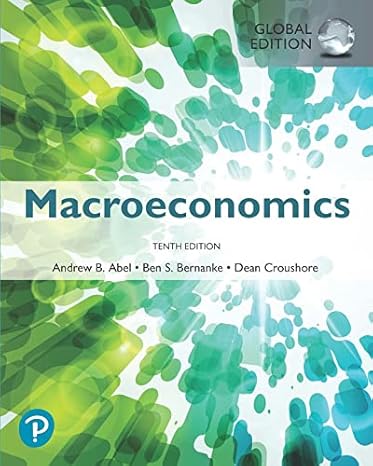1. Consider an economy in long-run equilibrium with an inflation rate, p, of 12% (0.12) per year...
Question:
1. Consider an economy in long-run equilibrium with an inflation rate, p, of 12% (0.12) per year and a natural unemployment rate, un, of 4% (0.04). The expectationsaugmented Phillips curve is p = pe - 2(u - un), where a is wage flexibility and u is the unemployment rate in the current year. Assume that Okun’s law holds so that a 1 percentage point increase in the cyclical unemployment rate maintained for one year reduces GDP by 3% of full-employment output.
a. Consider a two-year disinflation. In the first year, p = 0.06 and pe = 0.09. In the second year, p = 0.06 and pe = 0.06. What are the unemployment rates in the first and second years? By what percentage does output exceed the full-employment in the first and second year respectively?
What is the sacrifice ratio for this disinflation?
b. Now consider a four-year disinflation according to the following table:
Year 1 2 3 4 p 0.09 0.06 0.06 0.06 pe 0.15 0.12 0.09 0.06 What is the unemployment rate in each of the four years? By what percentage does output fall short of the full-employment output each year? What is the sacrifice ratio for this disinflation?
Step by Step Answer:

Macroeconomics Global Edition
ISBN: 978-1292318615
10th Edition
Authors: Andrew Abel ,Ben Bernanke ,Dean Croushore






